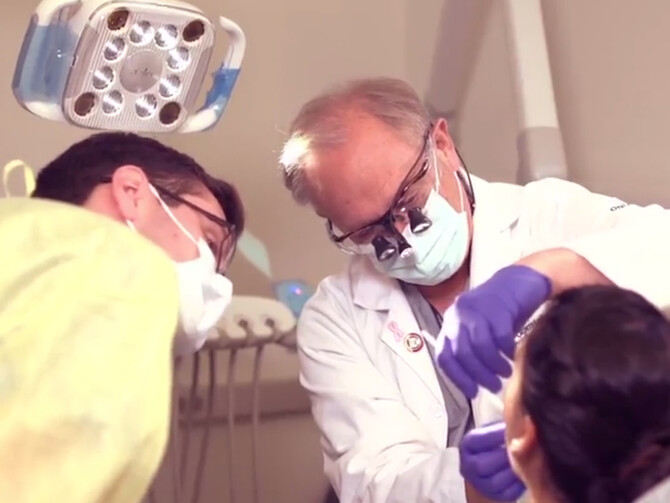Penn Dental Medicine Launches First Open Online Course
By Sarah Welsh
When most people think about the dentist, they may think about semi-annual examinations, dental cleanings and other procedures aimed at maintaining and restoring the health of their teeth. The School of Dental Medicine at the University of Pennsylvania wants to expand that view. The free online course, “Introduction to Dental Medicine,” will allow anyone with access to the Internet to learn what dentistry is all about.
Beginning on June 15, the seven-week course will cover the scope of modern dentistry, from basic dental anatomy and disease to examination techniques to common orofacial disorders. The course will be taught by Uri Hangorsky, clinical professor of periodontics and associate dean of academic affairs; Eric Stoopler, associate professor of oral medicine and director of postdoctoral oral medicine; and Thomas P. Sollecito, professor and chairman of the Department of Oral Medicine.
The online course is free, though students wanting to receive official certificates verifying course completion will be charged a fee.
The course was developed through Penn’s Open Learning Initiative in late 2014 and began filming in March 2015. Putting it together was no easy feat.
“It’s very complicated because it’s not just simply recording a lecture,” Hangorsky says. “You need to choose the right material, find the slides, create animations and coordinate it with the video process.”
Each video lecture will feature a different aspect of dental medicine. There are no prerequisites, though Hangorsky says some knowledge of biology will give students a leg up in the course.
The professors see the main target audience as health-care professionals working in fields outside dental medicine.
“Many physicians, nurses, pharmacists and other health-care practitioners don’t really know much about dental diseases,” Hangorsky says. “By taking this course, they will be able to better integrate dental health with the overall health of their patients.”
For example, a common type of drug used to treat high blood pressure, calcium channel blockers, can cause enlargement of the gums. But cardiologists frequently fail to advise their patients about this side effect.
“It’s a fairly common occurrence that a patient comes in with bleeding gums that began when they started taking the medication,” Hangorsky says, “When I ask the patients if the doctor had advised them about this, a common response is ‘no.’”
The professors hope that the online course will help bridge the gap between the medical and dental fields and equip health-care professionals with the knowledge to recognize and educate patients about oral diseases.
For Stoopler and Sollecito, the integration of medicine and dentistry is inherent in their day-to-day professional lives. Both teach oral medicine at Penn Dental Medicine and practice within the University of Pennsylvania Health System, often collaborating with physicians to diagnose and manage oral diseases and related systemic diseases.
In the online course, dental cases involving real patients will be presented showing what happens before, during and after diagnosis and treatment. Faculty members and Penn Dental Medicine students will discuss diseases and cases in their areas of specialty.
The professors hope their course is also valuable to high school and college students contemplating a career in dentistry, which is not commonly taught or even introduced before graduate school. This course could provide students with a window into the field.
The course will also showcase the dental school itself. Founded in 1878, Penn Dental Medicine is one of the oldest university-affiliated dental schools in the country. While most urban universities house the dental schools off the main campus, Penn’s dental school is part of the central operation, promoting cross-school collaboration.
The developers of the online course hope it will break down misconceptions about the field and begin to paint a more complete picture of its integral role in overall health.
“Dentistry is much more encompassing than most people believe,” Hangorsky says. “It’s not just drilling, filling and doing six-month check-ups. It’s much more complex. In this course we will focus on the relationship between oral health and systemic health; this is what modern dentistry is all about.”
To sign up for the course and for more information, visit the course site on the Coursera website.








